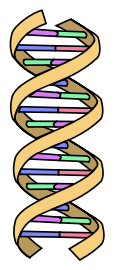Michael J. Behe's Blog, page 465
June 21, 2019
A science writer considers the cost of science functioning as an inquisition
Riffing off his interest in an eccentric 16th-century scientist and astrologer, a science writer reflects,
But despite Jerome’s life story being relatively unfamiliar today, his experiences of what happens when people reject orthodoxy are not. The spirit of the Inquisition has never been fully extinguished; wherever the powerful are threatened by progress, they will suppress debate. Science has not escaped this phenomenon. Even something as fundamental as quantum mechanics, built on the twin pillars of probability and imaginary numbers that Jerome erected, has been stunted by censure. There are a number of examples even within this small area of physics, but perhaps none is more resonant of Jerome’s experience than the story of David Bohm.
Michael Brooks, “he Spirit of the Inquisition Lives in Science” at Nautilus
Actually, Bohm’s biggest problem was that he was not a materialist.
The second problem is that Bohm’s pilot wave is odd—in a way that physicists call “nonlocal.” This means that the properties and future state of our photon are not determined solely by the conditions and actions in its immediate vicinity. The photon’s pilot wave and the photon’s wave function are linked to the wave function of the much, much larger system in which they sit—the wave function of the whole universe, effectively. So our photon can be instantaneously affected by something that happens half a universe away.
Michael Brooks, “he Spirit of the Inquisition Lives in Science” at Nautilus
Just about everything except non-materialism is forgiven, despite the history.
More on Bohm later.
See also: What Taragana
June 20, 2019
Proof of Darwinism at last! The babyface dog!
Pop science media tried to spin this as an “evolution” story, which is ridiculous:
Recent research has focused on a minor difference between dogs and wolves which might help explain why dogs are loved and wolves are not:
In the first detailed analysis comparing the anatomy and behavior of dogs and wolves, researchers found that the facial musculature of both species was similar, except above the eyes. Dogs have a small muscle, which allows them to intensely raise their inner eyebrow, which wolves do not. The authors suggest that the inner eyebrow raising movement triggers a nurturing response in humans because it makes the dogs’ eyes appear larger, more infant like and also resembles a movement humans produce when they are sad. Paper.(open access) Juliane Kaminski, Bridget M. Waller, Rui Diogo, Adam Hartstone-Rose, Anne M. Burrows. Evolution of facial muscle anatomy in dogs. Proceedings of the National Academy of Sciences, June 17, 2019; DOI: 10.1073/pnas.1820653116
University of Portsmouth, “The evolution of puppy dog eyes” at ScienceDaily
Dr. Kaminski had found earlier that dogs moved their eyebrows much more if humans were looking at them.
And what about wolves? The muscle that allows dogs to raise their eyebrows is “a scant, irregular cluster of fibres” in wolves. She notes,
“This is a striking difference for species separated only 33,000 years ago and we think that the remarkably fast facial muscular changes can be directly linked to dogs’ enhanced social interaction with humans.”
“The raised inner eyebrow movement in dogs is driven by a muscle which doesn’t consistently exist in their closest living relative, the wolf. University of Portsmouth, “The evolution of puppy dog eyes” at ScienceDaily
In this case, “evolution” appears to mean that, over tens of millennia, humans embellished “a scant, irregular cluster of fibres” by selective breeding of dogs people like … More. “Those Puppy Dog Eyes Are No Accident” at Mind Matters News
Would you be shocked to learn that babyface dogs are more likely to be adopted at shelters?
See also: Dogs are more like humans than chimpanzees are (in certain psychological senses – that’s why so many people have dogs and almost no one has a chimpanzee)
and
A Top Anthropology Finding Of Year Show Humans Cognitively Closer To Dogs Than Chimps (2017)
Follow UD News at Twitter!
Copyright © 2019 Uncommon Descent . This Feed is for personal non-commercial use only. If you are not reading this material in your news aggregator, the site you are looking at is guilty of copyright infringement UNLESS EXPLICIT PERMISSION OTHERWISE HAS BEEN GIVEN. Please contact legal@uncommondescent.com so we can take legal action immediately.
Plugin by Taragana
We are told that T. Rex had an amazing sense of smell
The researchers relied on comparing the shape of dinosaur brains with those of living birds:
Generally speaking, living birds with more olfactory receptors—proteins that bind with specific odor molecules—tend to have disproportionately large olfactory bulbs, the regions in their brains that process smells. So Hughes and Finarelli combed the scientific literature for records of olfactory bulb sizes and measured brain-size ratios for 42 living birds, two extinct birds, the American alligator, and 28 extinct non-avian dinosaurs. They also tracked down the DNA of many living birds, and then combined all that data with a previously published study to build a new database of the living animals’ olfactory receptor genes.
When the researchers projected the resulting model of living creatures back to dinosaurs, they found that Tyrannosaurus rex probably had between 620 and 645 genes encoding its olfactory receptors, a gene count only slightly smaller than those in today’s chickens and house cats. Other large meat-eating dinosaurs, such as Albertosaurus, also had large olfactory receptor gene counts.
Michael Greshko, “T. rex had an amazing sense of smell, gene study suggests” at National Geographic
Just think. A cat the size of a small building, stalking you.
See also: Dinosaurs Are Tearing Paleontology Apart? Well, what did you expect? The Buddha with bigger teeth? 
Computer model suggests: Plate tectonics drove Cambrian Explosion
From ScienceDaily:
While a number of theories have been put forward to explain this landmark period, the most credible is that it was fuelled by a significant rise in oxygen levels which allowed a wide variety of animals to thrive.
The new study suggests that such a rise in oxygen levels was the result of extraordinary changes in global plate tectonics.
During the formation of the supercontinent ‘Gondwana’, there was a major increase in continental arc volcanism — chains of volcanoes often thousands of miles long formed where continental and oceanic tectonic plates collided. This in turn led to increased ‘degassing’ of CO2 from ancient, subducted sedimentary rocks.
This, the team calculated, led to an increase in atmospheric CO2 and warming of the planet, which in turn amplified the weathering of continental rocks, which supplied the nutrient phosphorus to the ocean to drive photosynthesis and oxygen production…
Williams added: “What is particularly compelling about this research is that not only does the model predict a rise in oxygen to levels estimated to be necessary to support the large, mobile, predatory animal life of the Cambrian, but the model predictions also show strong agreement with existing geochemical evidence.”
“It is remarkable to think that our oldest animal ancestors — and therefore all of us — may owe our existence, in part, to an unusual episode of plate tectonics over half a billion years ago” said Professor Lenton. Paper. (open access) – Joshua J. Williams, Benjamin J. W. Mills, Timothy M. Lenton. A tectonically driven Ediacaran oxygenation event. Nature Communications, 2019; 10 (1) DOI: 10.1038/s41467-019-10286-x More.
Note: “It is remarkable to think that our oldest animal ancestors — and therefore all of us — may owe our existence, in part, to an unusual episode of plate tectonics over half a billion years ago” Is this a philosophical statement of some kind?
There is a rich vein of causes of the Cambrian explosion. Here is a handful:
Extreme fluctuation in oxygen levels
Cambrian animals remade the environment by generating oxygen
Did a low oxygen level delay complex life on Earth?
There was only a small oxygen jump
Animals didn’t “arise” from oxygenation, they created it, researchers say
Theory on how animals evolved challenged: Some need almost no oxygen
New study: Oxygenic photosynthesis goes back three billion years
Enough O2 long before animals?
Life exploded after slow O2 rise?
So the Cambrian really WAS an explosion then?
and
Researchers: Cambrian explosion was not an explosion after all (When in doubt, insist that nothing happened.)
oh, and The Great Unconformity.
Copyright © 2019 Uncommon Descent . This Feed is for personal non-commercial use only. If you are not reading this material in your news aggregator, the site you are looking at is guilty of copyright infringement UNLESS EXPLICIT PERMISSION OTHERWISE HAS BEEN GIVEN. Please contact legal@uncommondescent.com so we can take legal action immediately.
Plugin by Taragana
Claims for a new cat “species”
One of sixteen such known “cat-fox” felines in northern Corsica was captured:
While resembling a domestic cat in some ways, the ring-tailed feline measures 90 centimetres (35 inches) from head to tail, has “very wide” ears, short whiskers and “highly developed” canine teeth.
Maureen Cofflard, “Corsica’s ‘cat-fox’: On the trail of what may be a new species” at Phys.org
 A cat-fox, later released
A cat-fox, later releasedThat’s impressive! Toby, one of the editorial assistants at Uncommon Descent News, is a feline who is only 70 cm (30 inches) from head to tail. And those “cat-fox” teeth are amazing! But …
“By looking at its DNA, we could tell it apart from the European wildcat, Felis silvestris silvestris. It’s close to the African forest cat, Felis silvestris lybica, but its exact identity is still to be determined,” Benedetti adds.
Maureen Cofflard, “Corsica’s ‘cat-fox’: On the trail of what may be a new species” at Phys.org
The odd thing is that no data are offered to the public as to why the subject is not just a “feral cat,” a cat who lives around but not with humans. How much do the genetic differences matter? If the cat-fox found itself among feral cats, would it just blend in? If it would, why doesn’t that matter to classification?
 Toby
TobyTo what extent has the “biological species concept” become a mere means of generating publicity for research or political action for environmental causes? The research and causes are doubtless worthwhile but we still seek an informative classification method.
By the way, this cat can’t be related to the fox. No one specifically makes that claim but it is left hanging.
See also: Researchers: Purebred dogs are not biological species
and
A physicist looks at biology’s problem of “speciation” in humans
Follow UD News at Twitter!
Copyright © 2019 Uncommon Descent . This Feed is for personal non-commercial use only. If you are not reading this material in your news aggregator, the site you are looking at is guilty of copyright infringement UNLESS EXPLICIT PERMISSION OTHERWISE HAS BEEN GIVEN. Please contact legal@uncommondescent.com so we can take legal action immediately.
Plugin by Taragana
June 19, 2019
Sabine Hossenfelder: Don’t expect too much from new proposals to detect dark matter
 3-D impression of dark matter via Hubble
3-D impression of dark matter via HubbleSabine Hossenfelder, author of Lost in Math: How Beauty Leads Physics Astray, points out that previous methods of detection have not worked and now the net is cast much wider:
Instead, their strategy is now to fund any proposed experiment that could plausibly be said to maybe detect something that could potentially be a hypothetical dark matter particle. And since there are infinitely many such hypothetical particles, we are now well on the way to building infinitely many detectors. DNA, carbon nanotubes, diamonds, old rocks, atomic clocks, superfluid helium, qubits, Aharonov-Bohm, cold atom gases, you name it. Let us call it the equal opportunity approach to dark matter search.
As it should be, everyone benefits from the equal opportunity approach. Theorists invent new particles (papers will be written). Experimentalists use those invented particles as motivation to propose experiments (more papers will be written). With a little luck they get funding and do the experiment (even more papers). Eventually, experiments conclude they didn’t find anything (papers, papers, papers!).
In the end we will have a lot of papers and still won’t know what dark matter is. And this, we will be told, is how science is supposed to work.
Sabine Hossenfelder, “Brace for the oncoming deluge of dark matter detectors that won’t detect anything” at BackRe(Action)

She doesn’t so much oppose it as she doesn’t want to “wait another 40 years for physicists to realize that falsifiability alone is not sufficient to make a hypothesis promising.”
Those who remember science from fifty or thirty years ago find this state of affairs odd.
See also: Dark matter and dark energy in a world where neither has been discovered
Follow UD News at Twitter!
Copyright © 2019 Uncommon Descent . This Feed is for personal non-commercial use only. If you are not reading this material in your news aggregator, the site you are looking at is guilty of copyright infringement UNLESS EXPLICIT PERMISSION OTHERWISE HAS BEEN GIVEN. Please contact legal@uncommondescent.com so we can take legal action immediately.
Plugin by Taragana
Learning from one of “science’s biggest frauds” (we hope)
 What’s hot? What’s not?/Niklas Bildhauer, Wikimedia
What’s hot? What’s not?/Niklas Bildhauer, Wikimedia That would be Yoshihiro Sato, whose misdeeds in this matter have prompted the retraction of over 60 studies so far. A fellow bone health researcher gave serious attention to the question:
The analysis is one of just a few to look closely at research-misconduct investigations, and the first to use a systematic approach to rate them, says C. K. Gunsalus, a specialist in research integrity at the University of Illinois at Urbana–Champaign, who was not part of the analysis. Too many research-misconduct investigations turn out to be inadequate or flawed, says Gunsalus, who had a hand in creating a 26-point checklist2 that university officials can use to guide probes into research misconduct, which Grey’s team used to rate the investigations.
The checklist questions an investigation’s scope, reliability and impact — for instance, whether the investigating committee included external members and whether evidence could have been tampered with. The team independently assessed each investigation report using the checklist; one report had addressed none of the points adequately and two others properly addressed only two or three points. “Overall, each report was considered unacceptable,” say Grey and colleagues.
Holly Else, “What universities can learn from one of science’s biggest frauds” at Nature
See also: Most chemistry papers are retracted for serious, not trivial, problems
and
A study of the causes of science skepticism sails right by the most obvious cause of skepticism: Repeated untrustworthiness
Follow UD News at Twitter!
Copyright © 2019 Uncommon Descent . This Feed is for personal non-commercial use only. If you are not reading this material in your news aggregator, the site you are looking at is guilty of copyright infringement UNLESS EXPLICIT PERMISSION OTHERWISE HAS BEEN GIVEN. Please contact legal@uncommondescent.com so we can take legal action immediately.
Plugin by Taragana
The remarkable world of virus communication
Further to questions around animal, plant, and bacterial communication:
Sorek and his colleagues had found phages actively discussing their choices. They realized that as a phage infects a cell, it releases a tiny protein — a peptide just six amino acids long — that serves as a message to its brethren: “I’ve taken a victim”. As the phages infect more cells, the message gets louder, signalling that uninfected hosts are becoming scarce. Phages then put a halt to lysis — the process of replicating and breaking out of their hosts — instead staying hidden in a sluggish state called lysogeny1.
The viruses, it turns out, did not depend on bacterial cues to make their decisions. They controlled their own destiny. “This finding was a big, important, revolutionary concept in virology,” says Wei Cheng, a structural microbiologist at Sichuan University in Chengdu, China.
Sorek named this viral peptide ‘arbitrium’, after the Latin word for decision. It seemed to work much like the communication system used by bacteria — quorum sensing — to share information about cell density and adjust the population accordingly. Yet it was the first time anyone had demonstrated molecular messaging of this kind in viruses. And it fitted into an emerging picture of viruses as much more sophisticated social agents than scientists had given them credit for.Elie Dolgin, “The secret social lives of viruses” at Nature
Do viruses think? Not in the human sense. As with plants, these communications are signals, not abstractions.
But the signals raise an important question: If viruses seek to remain in an organized state, why are they not “alive”? If they are not “alive,” what are they?
See also: Life forms have a story but rocks don’t. Talbott: An animal’s end-directed activity may, of course, be very far from what we humans know as conscious aiming at a goal. But all such activity nevertheless displays certain common features distinguishing it from inanimate proceedings
Can plants be as smart as animals?
Before you go: One way viruses get spread “never should have evolved”
Reset! Different segs of virus genome can exist in different cells but work together
Viruses devolve. (PaV)
Virus expert highlights the conflict over whether viruses are alive In short, it is an open question. The question relates to the role viruses can play in evolution, among other things. Are they precursors of life, detritus of life, or something in between? Or all three? Keep the file open.
Viruses invent their own genes? Then what is left of Darwinism?
Why viruses are not considered to be alive
Another stab at whether viruses are alive
Phil Sci journal: Special section on understanding viruses
Should NASA look for viruses in space? Actually, it’s not clear that RNA came first. Nor is it clear that viruses precede life. A good case can doubtless be made for viruses being part of the scrap heap of existing life. But no matter. If you think you can find viruses in space, boldly go.
Why “evolution” is changing? Consider viruses
The Scientist asks, Should giant viruses be the fourth domain of life? Eukaryotes, prokaryotes, archaea… and viruses?
and
Are viruses nature’s perfect machine? Or alive?
Follow UD News at Twitter!
Copyright © 2019 Uncommon Descent . This Feed is for personal non-commercial use only. If you are not reading this material in your news aggregator, the site you are looking at is guilty of copyright infringement UNLESS EXPLICIT PERMISSION OTHERWISE HAS BEEN GIVEN. Please contact legal@uncommondescent.com so we can take legal action immediately.
Plugin by Taragana
Yes, the Big Bang could be wrong, but what would that really mean?
 Big Bang/NASA
Big Bang/NASA Like every “defining narrative,” the Big Bang could be wrong. But what prompts us to think it is wrong?
To modern cosmologists, the Big Bang is a model describing how the universe expanded from an extremely hot, dense early state into the reality that we see today. The evidence for this interpretation overwhelming. Certainly, nothing else has come anywhere close in the last 50 years, even as our knowledge about the universe has grown tremendously…
At the same time, it is important to be open about how much we don’t know. It is not only possible, it is absolutely certain that our understanding of the Big Bang is incomplete.
Cosmic inflation is a widely accepted theory about what happened during the first fraction of a second during the Big Bang, but it is not proven. The current dispute over the cosmic expansion rate may be a reflection of our ignorance about that early era. Why and how the Big Bang occurred are complete mysteries. You may have heard cosmologists speculate about the “multiverse,” or about the idea of an oscillating universe with many beginnings, or about a collision between two membranes of reality that created our universe. Nobody knows which of these ideas, if any, is correct. But what they all have in common is that they all accept the evidence that our current universe emerged from an intensely hot, dense early state—which is to say, they all take the Big Bang as their starting point.
Corey S. Powell, “Could the Big Bang be Wrong?” at Discover Magazine
Actually, multiverse cosmology would make a starting point irrelevant or else subject to endless redefinition. Powell’s bookmark-able summary can’t address the problem, of course, but that’s precisely what the multiverse does. Facts no longer matter much because contradictory facts have equal status. And in the current environment, that would be such welcome news to so many.
See also: Continuing efforts to erase the beginning of time
The Big Bang: Put simply,the facts are wrong.
and
The multiverse is science’s assisted suicide
Follow UD News at Twitter!
Copyright © 2019 Uncommon Descent . This Feed is for personal non-commercial use only. If you are not reading this material in your news aggregator, the site you are looking at is guilty of copyright infringement UNLESS EXPLICIT PERMISSION OTHERWISE HAS BEEN GIVEN. Please contact legal@uncommondescent.com so we can take legal action immediately.
Plugin by Taragana
June 18, 2019
Why describing DNA as “software” doesn’t really work

Check out Science Uprising 3. In contemporary culture, we are asked to believe – in an impressive break with observed reality – that the code of life wrote itself:
… mainstream studies are funded, some perhaps with tax money, on why so many people don’t “believe in” evolution (as the creation story of materialism). The fact that their doubt is treated as a puzzling public problem should apprise any thoughtful person as to the level of credulity contemporary culture demands in this matter.
So we are left with a dilemma: The film argues that there is a mind underlying the universe. If there is no such mind, there must at least be something that can do everything that a cosmic mind could do to bring the universe and life into existence. And that entity cannot, logically, simply be one of the many features of the universe.
Yet, surprisingly, one doesn’t hear much about mainstream studies that investigate why anyone would believe an account of the history of life that is so obviously untrue to reason and evidence.Denyse O’Leary, “There is a glitch in the description of DNA as software” at Mind Matters News
Maybe a little uprising wouldn’t hurt.
Here at UD News, we didn’t realize that anyone else had a sense of the ridiculous. Maybe the kids do?
See also: Episode One: Reality: Real vs. material
and
Episode Two: No, You’re Not Robot made of Meat
Notes on previous episodes
Seven minutes to goosebumps (Robert J. Marks) A new short film series takes on materialism in science, including that of AI’s pop prophets
Science Uprising: Stop ignoring evidence for the existence of the human mind Materialism enables irrational ideas about ourselves to compete with rational ones on an equal basis. It won’t work (Denyse O’Leary)
and
Does vivid imagination help “explain” consciousness? A popular science magazine struggles to make the case. (Denyse O’Leary)
Further reading on DNA as a code: Could DNA be hacked, like software? It’s already been done. As a language, DNA can carry malicious messages
and
How a computer programmer looks at DNA And finds it to be “amazing” code
Follow UD News at Twitter!
Copyright © 2019 Uncommon Descent . This Feed is for personal non-commercial use only. If you are not reading this material in your news aggregator, the site you are looking at is guilty of copyright infringement UNLESS EXPLICIT PERMISSION OTHERWISE HAS BEEN GIVEN. Please contact legal@uncommondescent.com so we can take legal action immediately.
Plugin by Taragana
Michael J. Behe's Blog
- Michael J. Behe's profile
- 219 followers



